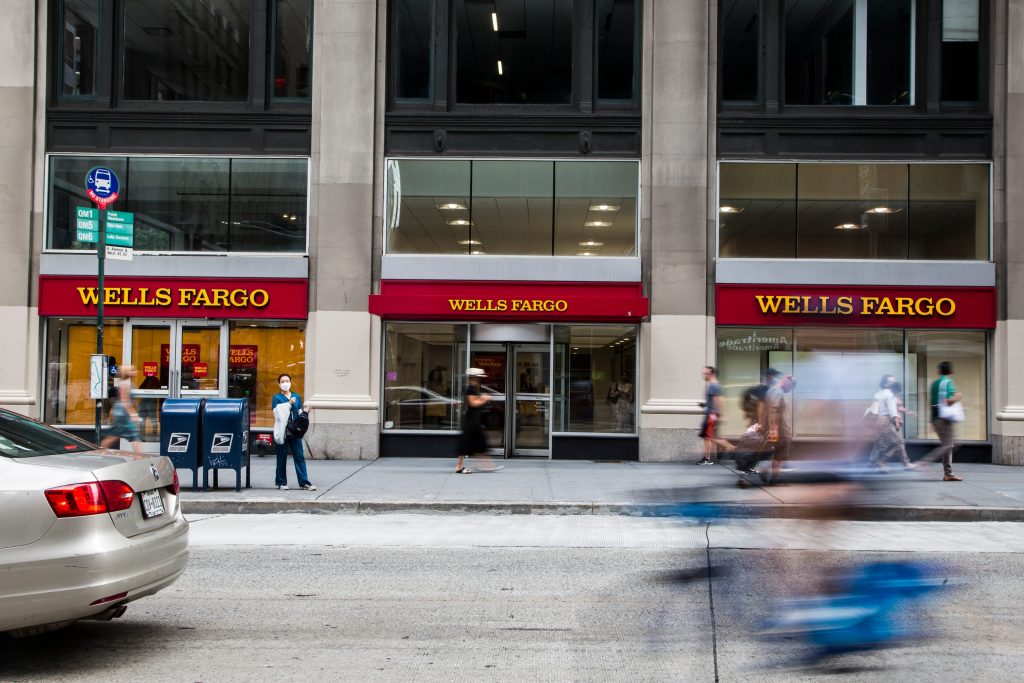- Wells Fargo published its first diversity report, which showed gains.
- The bank made progress in hiring executives from underrepresented groups last year.
- But, like its peers, Wells Fargo still struggles with diversity in many of its top executive roles.
The number of leaders at Wells Fargo from underrepresented backgrounds increased last year, but the bank, like its peers, still has a ways to go to make the industry's top echelons representative of the country.
In its first diversity and inclusion report, published Wednesday, Wells Fargo reported that the bank increased its share of female executives from 41.7% in 2020 to 44.3% last year. Its number of Black executives increased from 5.8% in 2020 to 8.9% in 2021, and its share of Latino execs rose from 3.9% to 4.7%. Still, there's a lack of diversity at the top of the bank: A majority of executives — 73.3% — are white.
For the country as a whole, the census figures show 60% of Americans are white, 19% are Hispanic/Latino, 13% are Black, and 6% are Asian.
The challenges around diversity aren't unique to Wells Fargo. More than three-quarters of JPMorgan's executives, 77%, are white, according to its most recent data, which is from 2021. At Bank of America, that number is 77.5%, according to 2021 figures. And at Citi, it's 73%, based on its most recent report, published in 2020. The majority of executives are also male throughout the industry.
Wells Fargo's diversity report comes as advocates are calling on Wall Street to deliver on promises made after George Floyd's murder in May 2020. In addition to committing billions of dollars to racial equity in the economy, the banks restated their pledges to improve diversity within their organizations and make their firms look more like the US population.
To do that, Wells Fargo has taken a number of measures, including tying executive compensation to increasing diversity in its ranks. But figures from the San Francisco bank's first report, in addition to numbers from other top banks, show more work is needed to make the upper echelons of the nation's financial heavyweights more representative of the country's population.
Kleber Santos, Wells Fargo's head of diverse segments, representation, and inclusion, acknowledged the work that remained.
"As I've said before, this is a marathon, not a sprint, so we know there is much work to do in the years ahead," he said. "We need to continue to measure our progress in a data-driven way and engage diverse talent across the company, as well as outside stakeholders, to get their feedback and suggestions."
People of color and women in general are concentrated in lower-paying roles
Like at other banks, Wells Fargo's nonexecutive employee population in the US is more diverse than its leadership. The slight majority, 53%, are female, and 45% are nonwhite. This mirrors the industry, where women, particularly women of color, are underrepresented except for in entry-level positions, 2021 McKinsey research found.
The salary differences between entry-level and more senior roles is significant in the banking industry. A financial analyst, a typical entry-level corporate banking job, makes a median of $81,000 per year, according to US government data. A financial manager, a more senior-level job, makes nearly $132,000.
The difference between non-corporate and corporate jobs is even greater. Bank tellers, for example, make a median of $36,000 in the US. An adult without children earning that salary would be making below living wage in New York City, Los Angeles, and Chicago, for example, according to MIT's living-wage calculator.
Some say banks need to invest more in lower-wage workers if they want to fulfill promises to make their companies more equitable. According to a 2021 poll of 1,200 people by the nonprofit Just Capital, 77% said that racial equity could not be achieved without all workers being paid a living wage.
Increasing minimum salaries in lower-wage jobs would significantly help reduce the wage gap between women and men and Black and Latin workers compared with white workers, according to research from the Economic Policy Institute, the Society for Human Resource Management, and the National Women's Law Center.
Diversity in banking is a work in progress
Wells Fargo's Santos said the bank was focused on improving diversity among leaders. In 2020, the banking giant instituted a rule that for all posted roles in the US with annual compensation greater than $100,000, at least half of interview candidates must be from a historically underrepresented group.
The rule is working, Santos said. In 2019, before the implementation of the rule, 36.9% of hires for people making $100,000 or more were racially or ethnically diverse — Black, Latino, Asian American, Pacific Islander, Native American, or Alaska Native. By 2021, that rose to 42.3% of leaders, according to Wells Fargo.
But there appear to be growing pains, at least according to recent reports. Seven current and former Wells Fargo employees said they were instructed to interview Black and female job applicants to meet goals on bringing in diverse candidates after the company was already prepared to hire another candidate, The New York Times reported last month. Santos responded to this report, saying the bank took any allegations of this kind seriously.
Separately, the bank rejected nearly half of all Black mortgage-refinancing applicants in 2020, Bloomberg reported in March. Santos, in response, told Insider that the bank also accepted more Black mortgage applicants than any other bank and that it had to deny applicants based on industrywide regulations. He said he hoped to work with federal agencies to change these rules to allow the acceptance of more Black applicants.
Wells Fargo's report underscored other areas on which the bank was focused. Since 2020, the company has helped 115 professionals return to the workforce after taking months-long or years-long breaks to raise families, to care for someone, or for medical leave. Among them, 94% were from historically underrepresented communities. And 88% converted from interns to full-time employees.
"We're driving real progress, and we're working relentlessly. But we also know it takes time to create enduring change in any workplace," Santos said.
In May 2021, Wells Fargo joined the OneTen Coalition. The group of CEOs and their companies set a 10-year goal to train, hire, and promote 1 million Black Americans without a four-year degree into jobs that would help them sustain their families and offer opportunities for advancement.
"Our diversity, equity, and inclusion work extends beyond our walls into the communities we serve," Santos said. "We're very much focused on opening more paths to economic opportunity for underrepresented communities."


